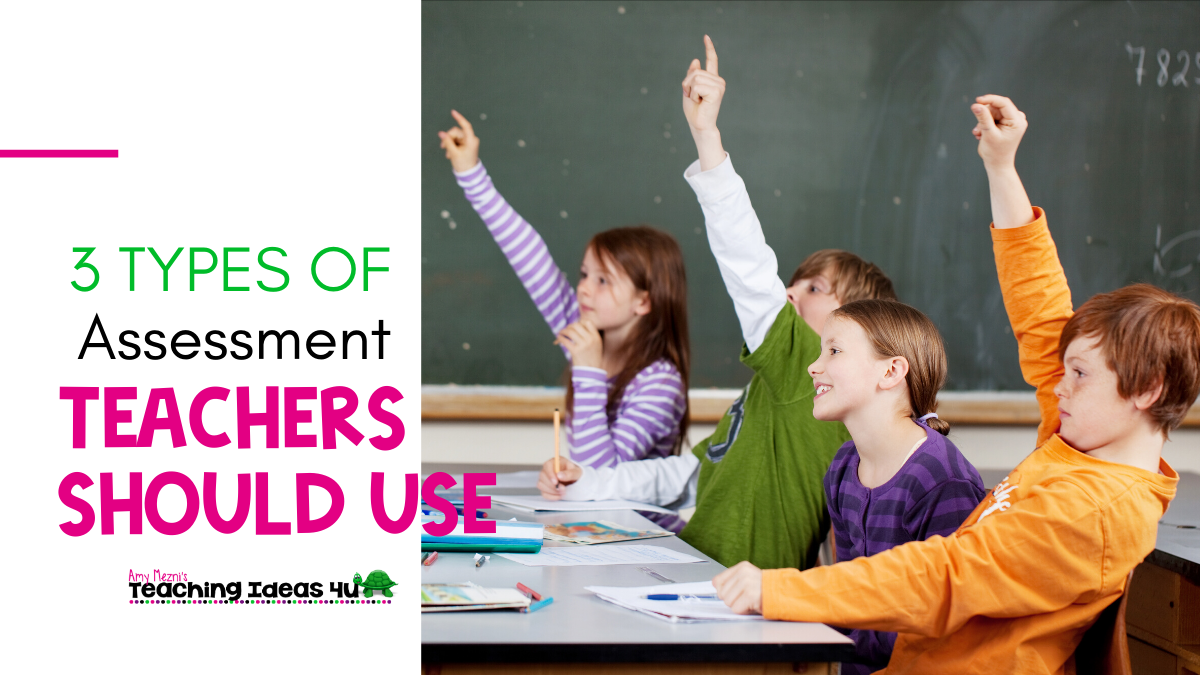3 Types of Classroom Assessment Every Teacher Should Use
Have you ever graded a set of tests and wondered why the grades weren’t better? I know I did. When I was a new teacher, my mentor told me the students didn’t study hard enough. Now I believe I probably didn’t teach the material in a way the kids understood. Had I understood the different types of assessment, I would have been able to catch students’ misunderstandings before the unit test.
Although there are many types of testing in education, including benchmark and standardized testing, in this post, I will focus on the three types that teachers can build into their instructional units: diagnostic, formative, and summative. Properly used, these tests will also positively impact students’ scores on district or state testing.
Diagnostic Tests
The first of 3 types of classroom assessments every teacher should use, most teachers call these tests pre-assessments. Although pre- and post-tests can be effective ways to inform your teaching, many educators do not use them. Either they don’t have access to pre-assessments, or perhaps they don’t realize how they could use the tests to tailor their instruction.
Let’s say you need to teach grammar. By giving students a pre-assessment, you could analyze whether or not students already know some concepts and not others. This information could be used to skip unneeded lessons – if they have mastered nouns, use your valuable class time on something they don’t know – or it could be used to differentiate instruction.
Although pre-tests seem like they take a lot of time, they can save valuable instruction time by showing you which concepts students have already mastered.
A post-assessment is helpful for different reasons. Teachers can analyze the results of the post-assessment to see if any questions had a high number of incorrect responses. If a large group of students missed a specific question about the effects of the Civil War, then the teacher may want to review that topic and consider revising the lesson.
Formative Assessments
Teachers use many types of formative assessments and might not even realize it. Formative assessments are any quick-check that is done throughout a unit of instruction, usually after a lesson. Quizzes, exit tickets, and student self-assessments are all formative assessments.
Although these are sometimes graded, formative assessments can be most effective when students are taught to use them as self-assessments for understanding. How many times have you graded a quiz, only to have students look at the grade and nothing else? Students need to be intentionally taught how to analyze and reflect on formative assessments, as well as use them to ask questions and get help on their misunderstandings.
When students see formative assessments as a learning tool instead of a “grade,” they become more engaged in their learning.
Summative Assessments
The third of 3 types of assessments every teacher should use, summative assessments are final assessments given at the end of an instructional unit. These assessments are often a test, essay, presentation, or project. The goal of a summative assessment is to assess how well students have mastered the target standards and skills of the unit.
An effective unit should be designed to build students’ knowledge and abilities that he or she is expected to have by the end of instruction. The summative assessment should be designed to check those targeted skills.
If you would like to know more about formative and summative instruction, please check out these posts:

